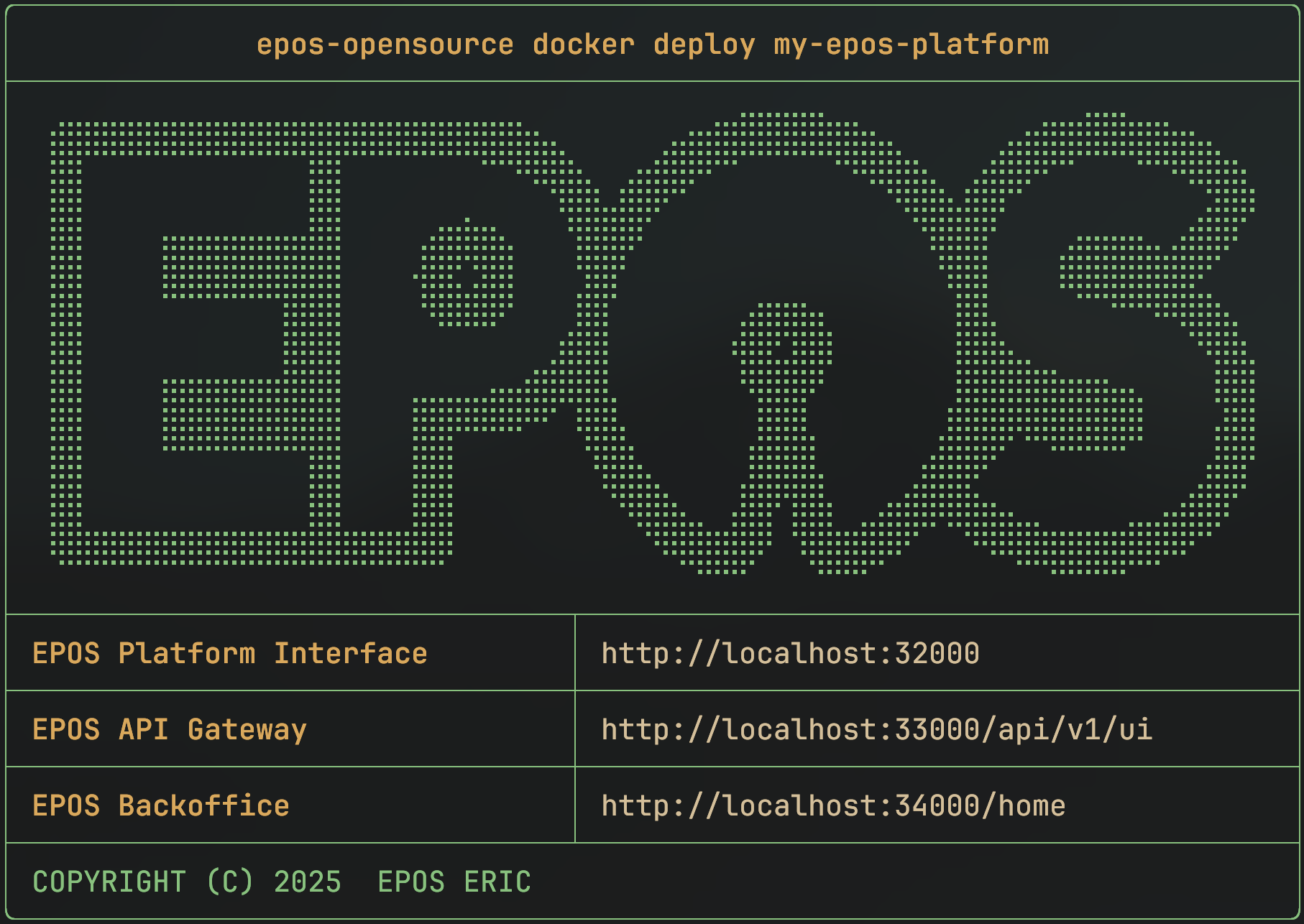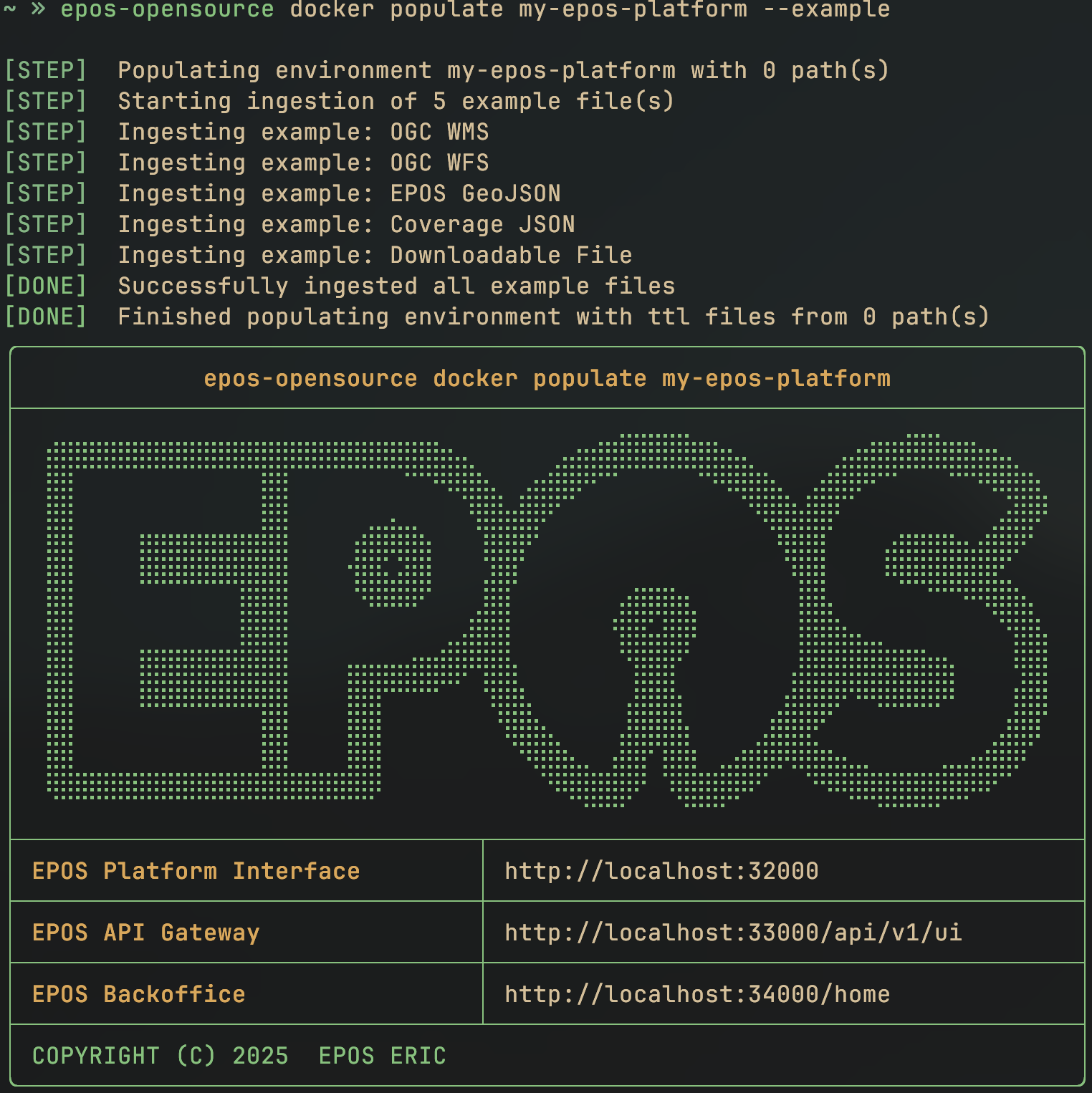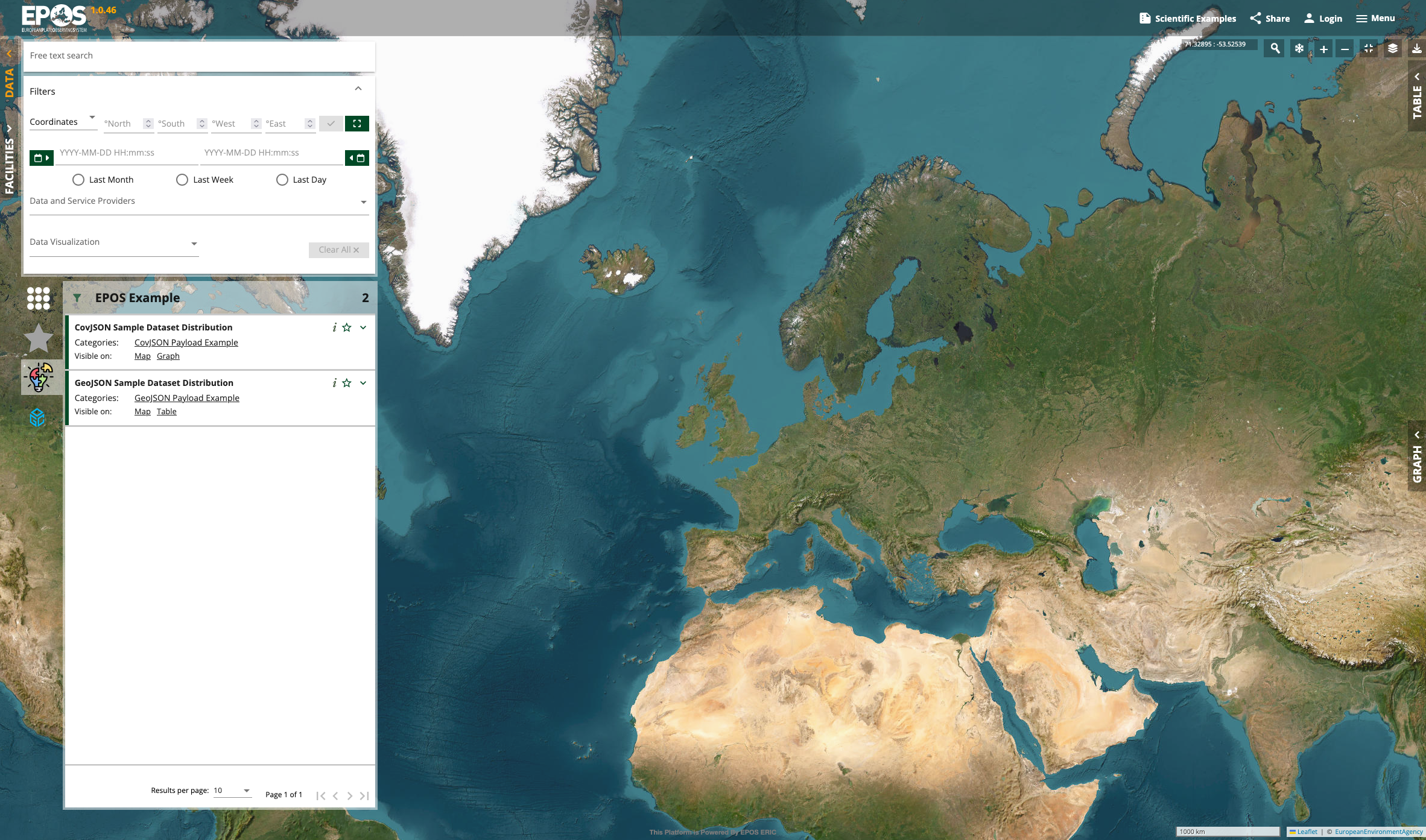Quickstart
This guide will get you up and running with a local instance of the EPOS Platform in just a few minutes. By the end, you'll have a fully functional data catalogue populated with sample data.
Prerequisites
Before you begin, make sure you have the following installed and running:
- Docker: The EPOS Platform runs in containers, so you'll need Docker. Learn how to install Docker.
- System Requirements: At least 4GB of RAM, 2 CPU cores, and 10GB of free storage.
- A command-line terminal: The installation is done via the command line.
1. Install the EPOS CLI
First, you need to install the epos-opensource command-line interface (CLI). This tool will handle the deployment and management of your platform. Choose the tab for your operating system below.
- Linux / macOS
- Windows
You can install the CLI with a single command in your terminal:
curl -fsSL https://raw.githubusercontent.com/EPOS-ERIC/epos-opensource/main/install.sh | bash
For Windows, you'll download the command-line tool directly:
- Go to the EPOS Open-Source Releases page.
- Download the latest file named
epos-opensource-windows-amd64.exe. - Rename the downloaded file to
epos-opensource.exe. - Move this file to a memorable location, for example,
C:\epos.
To use the CLI, you will need to open a terminal (like Command Prompt or PowerShell) and navigate to the folder where you saved epos-opensource.exe. For example:
cd C:\epos
All subsequent epos-opensource commands in this guide should be run from that terminal session.
To make sure it's installed correctly, open a new terminal and run:
epos-opensource --version
You should see an output like epos-opensource version v0.6.0 (the version number may vary).
For more detailed installation instructions, including how to build from source, see the CLI Tool documentation.
Updating the CLI
To keep your CLI up to date, you can use the update command. It is the recommended way to get the latest version.
epos-opensource update
2. Deploy the Platform
Now, with Docker running, you can deploy the entire EPOS Platform with a single command.
Choose a name for your platform instance (e.g., my-epos-platform) and run:
epos-opensource docker deploy my-epos-platform
This command will download all the necessary Docker images and start the services. It might take a few minutes depending on your internet connection.
When it's done, you'll see a confirmation message with the access URLs for your new platform.

3. Populate with Sample Data
To see your platform in action, you can populate it with some example metadata we provide. This will create a few example entries in your data catalogue.
epos-opensource docker populate my-epos-platform --example

There is a known issue with the system where sometimes populated data might not show up immediatly. We are aware of this and currently working on a fix. In the meantime you can easily fix it by simply restarting the resources-service container.
Try running:
docker restart my-epos-platform-resources-service
Remember to change my-epos-platform with the name you used when deploying the environment.
If that doesn't work feel free to open an issue on GitHub.
For more solutions to common issues, please see our Troubleshooting Guide.
4. Explore Your New Platform
Congratulations, your EPOS Platform is live!
Open your web browser and go to the EPOS Platform GUI provided at the end of the deployment step. The default URL is http://localhost:32000/.

You should see the main interface for browsing and searching for geospatial services. The sample metadata will appear on the top-left side of the interface.
You can also explore the API Documentation at http://localhost:33000/api/v1/ui.
Next Steps
Now that you have a running instance, you can:
- Learn how to use the platform with our User Guide.
- Explore advanced deployment options in the Installation Guide.
- Understand the system design by reading about the architecture.
- Add your own data by learning how to describe web services using EPOS-DCAT-AP